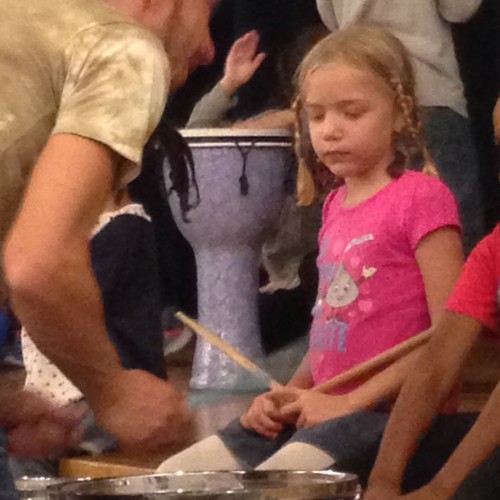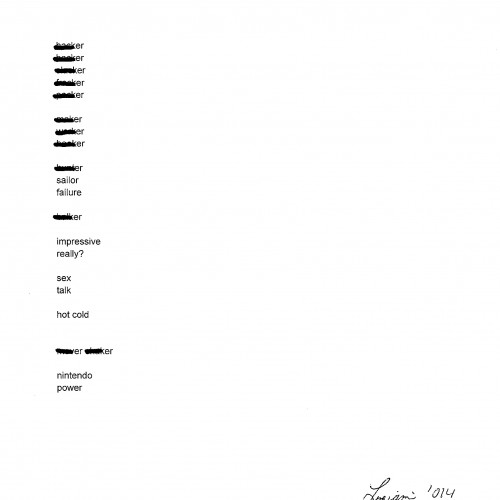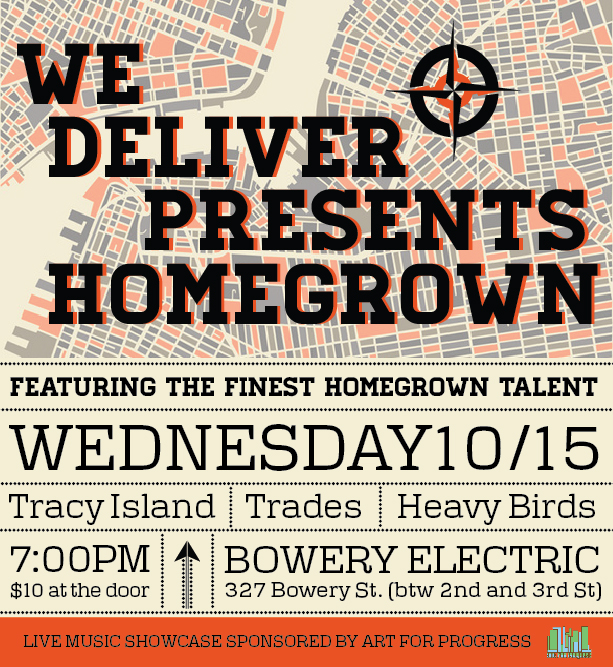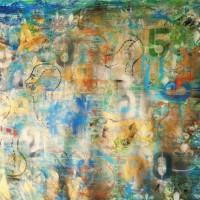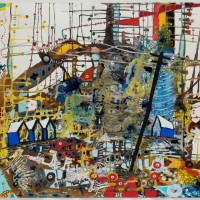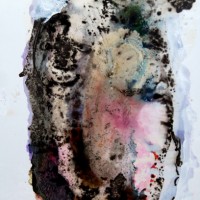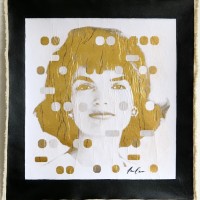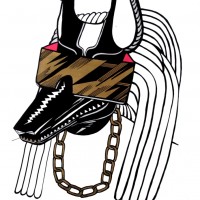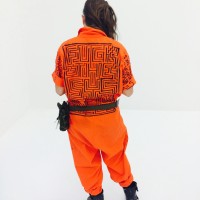- 10 years ago
-
September has been another exciting month for AFP Arts Education. We have been forming alliances with a variety of other non-profit groups, as well as getting this semester’s programs under way. Teaching artist Elio Schiavo has been doing a great job with our new partner LACASA at P.S. 84. Elio is teaching four percussion classes per week to K-4 students.
I have hit the ground running at Humanities Prep this semester. In addition to having two great groups of kids in my regular classes, I have some very dedicated and focused students attending, and we are getting into some great stuff, including song analysis, learning how to identify the key or keys of a song, and some new improvisation techniques.
One of my favorite things about having the opportunity to teach at the same school for a third consecutive year is that new students have heard exciting things about my class from their friends. When they come to class in the beginning of the year they are eager and hopeful, they know the class can help them achieve goals that are important to them, and they are attentive and participate with less self-consciousness. Some students who have excelled and some who were slow to appreciate the opportunity actually request to be enrolled in the class for a second time. Whether they are expanding their repertoire or finally taking the class seriously, returning students are enthusiastic and focused without exception. Because there is a well established creative musical culture that has now been in place for two full years, students and even teachers come by my classroom to see if they can get a few minutes of practice in or an impromptu lesson.
After three weeks of intensive music theory instruction, my music students have begun to start to apply their new knowledge to instruments. They are now learning guitar chords, putting scales and chords together on the pianos and keyboards, and some have gravitated toward the computers where they have been learning to play beats on keyboard controllers along with the metronome in Garage Band. I can’t wait to hear the next “trap” track!
Latest News
- 10 years ago
-
Alan Lupiani has been a involved in the New York art scene since 1996. In this time, he has built an impressive resume of exhibitions that he has participated in and curated himself. Lupiani, a graduate of Binghamton University, earning a BA Studio Art 1988, would go onto receive his MBA in Arts Administration from the same institution in 1991. While Lupiani is a trained painter, his most recent work questions the conceptual bonds between painting and performance based work.
In 2007, he launched his own LIVE Internet show entitled, “Dear Immaculately Groomed Italian Guy.” The show was successful in that it attracted as many as 10,000 viewers per episode. Lupiani produced approximately fifteen live episodes. Each episode utilized a similar format: cooking dinner for a guest in his apartment, while taking Skype calls from a global audience base. He also presented previously recorded clips with his guest at various locations around New York City. Lupiani recruited the individuals he hosted through the “Gigs” section of Craig’s List. These meetings via Craig’s List created the vibe of chance intimacy which resulted in provocative, comedic interactions.
Currently Lupiani “utilizes painting as a metaphor to deconstruct various “situations” which he discovers through the internet, pop culture, and his personal biography. This approach to painting involves picking words and images that Lupiani responds to on a daily basis. He then manipulates the images in Photoshop, prints them out, and reworks them by hand in the studio.
Lupiani maintains a studio practice while also being involved in the art world on multiple levels. In 2013, he was named Administrative Co-Director of the New York Studio Residency Program. He Co-Directs the NYSRP with artist/activist Artistic Co-Director, William Powhida. More recently, Lupiani has also curated various group shows, and launched his own art consulting business. I spoke with Lupiani regarding the contemporary art scene in New York City, his own studio practice, and what it takes to be a successful artist in today’s world.
Anni Irish: How did you start working at NYSRP? What role you played as a studio manager?Alan Lupiani: Retired Director John Tomlinson hired me in 1997. I supported John and the Program in this capacity until my promotion to Administrative Co-Director in June 2013.
AI: How that has your role changed in the program in the last year?
AL: I am now the Administrative Co-Director of the NYSRP, responsible for day to day operations. Additional responsibilities now include formulating the marketing, community/alumni and strategic development.
Image courtesy of Alan Lupiani, 2014.
AI: What are some of your favorite aspects of being able to work with emerging artists on a daily basis?
AL: There is always a fresh vibe at the NYSRP which keeps the environment lively and engaging. Meeting different people who come through the program such as visiting artists, critics, and a constant flow of exceptional residents keeps the critical inquiry alive and well.
AI: How did your undergraduate experience at Binghamton University formulate your art making practice?
AL: I received a traditional NYC middle century modernist based painting education, which focused on the technical aspects of making a painting. I worked primarily with Brooklyn born painter Angelo Ippolito a second-generation abstract expressionist artist. He treated me like a son and supported my aspirations to become a painter.
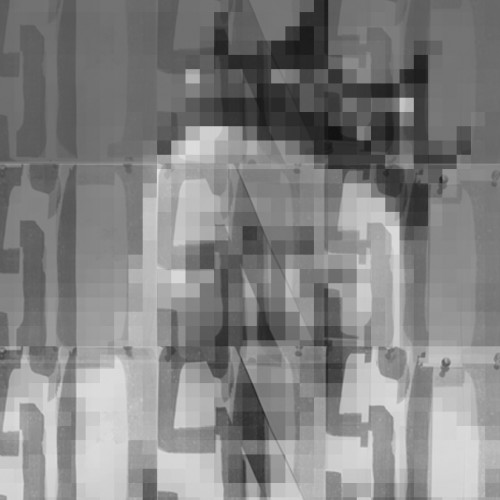 Image courtesy of Alan Lupiani, Biggie, 2014.
Image courtesy of Alan Lupiani, Biggie, 2014.AI: Your earlier experiences with Angelo Ippolito sound very important. What influences if any do you see of him occurring in your work?
AL: Angelo taught me to believe in myself and pushed me to take my art practice further.
AI: In your artist statement you discuss the conceptual break you made earlier on in your career being trained as a traditional painter to now using painting as a metaphor to “deconstruct situations on the internet, in popular culture.” I am really interested in that idea as both an intervention in the art world and the performance based potentials that it appears to have. Could you talk more about that?
AL: This goes back to my break out of the studio in 2006. I worked with actor and comedian Tom Green to help promote his internet talk show “Tom Green Live.” Tom mentored me in aspects of confrontational performance and how to take risks.
AI: How did the opportunity to work with Tom Green come about?
AL: The opportunity came about via Youtube, I had posted some goofy experimental performances based on a character called Aluminaman who would rock out to some AC/DC songs. One of Tom’s fans saw these videos and recommended that I contact Tom to participated on his LIVE streamed internet show.
AI: Your current work seems performative in terms of how you select images, then manipulate them both in Photoshop and in the studio. Could you describe that process a bit more and how the performance element has become more prevalent in your work over the last six years?
AL: I wouldn’t call it performance based per say. It is starting to head that way as I look to expand my studio into more formal white cube situations/events. Time and opportunity will tell.
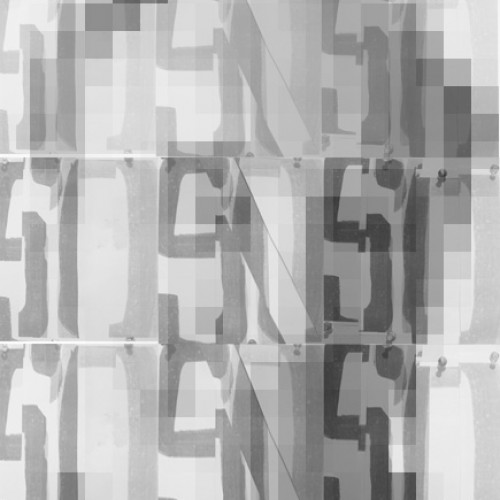 Image courtesy of Alan Lupiani, Tim Burners, 2014.
Image courtesy of Alan Lupiani, Tim Burners, 2014.AI: What are your thoughts regarding the current state of painting and it’s place within contemporary art?
AL: Essentially I view object making, not just painting, as an artist’s calling card. I prefer to focus on the artist as an, art being. The rest, object wise, is either made for the market or as an extension of the artist’s reach into society.
AI: You’ve been involved in the NYC art scene since 1996. In that time, what are some of the most significant changes you have seen in this time?
AL: The New York art world has become more professionalized and siloed into separate definable fiefdoms/class structures. For example, one structure are those artists who engage with blue chip galleries, earn a substantial living, exhibit in global biennials and museum shows. Another tier to this structure are gallery represented artists who make some money from their art and the rest from teaching or other job. Another grouping includes unrepresented artists who show from time to time and have another career to support themselves. Also, the development of communities through social media like Facebook and Instagram has helped to make the New York art community more interactive and engaging. However, making a living as a serious artist while not being beholden to the market seems as difficult as ever. In addition to the difficulties of just surviving in New York City, younger people have to be that much more committed and resourceful to make a go of it here. In this way, living/working as an artist in New York City seems more Darwinian than ever.
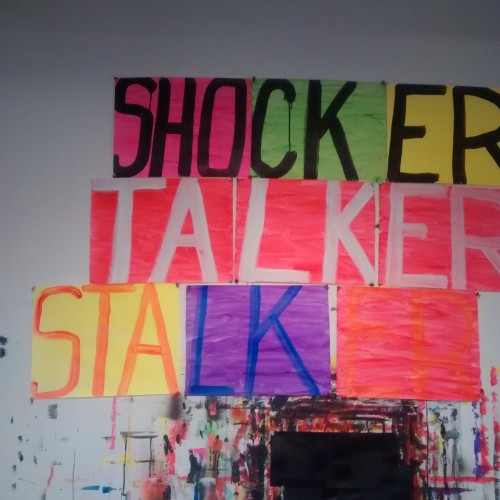 Image courtesy of Alan Lupiani, 2014.
Image courtesy of Alan Lupiani, 2014.AI: As an artist and now Administrative Co-director of NYSRP, what do you think is the importance of a fine arts based education in today’s world?
AL: Well, there are a lot of smart people in the world, but to make the jump to a deep thinking sophisticated thinker, it takes a lot of work and investigation. Art school provides a supportive platform for young people to develop their minds and ideas in this manner. Depending on the commitment of the student, art school can also be a great way of learning how to work/think independently, and to develop creative strategies/initiatives which may help shape society for future generations.
AI.: What is some of the best advice you ever received?
AL: “People don’t remember you for your successes, they remember you for how you treated them.” I agree with that statement.
AI: What are some authors and artists you are currently reading?
AL: From Boardrooms to Battlefields and Churches to States, Why Being In Charge Isn’t What It Used to Be by Moises Naim, Wild Bill Donovan by Douglas Waller and Hell’s Angels: A Strange and Terrible Saga by Hunter S. Thompson
AI: What are some projects you are you currently working on?
AL: I am scheduled to curate group show in Montreal next February which revisits the exhibition “BLAM,” previously presented at the Whitney Museum of American Art in 1986. I am working with emerging NYC and Canadian based artists for this exhibition. This group show, entitled, ÏmPop2 focuses on the pop/fluxus/minimalist pivot in NYC from 1958 – 1964 and how these issues/topics/concerns are still relevant today.
To learn more about Alan Lupiani’s work check out his website and be sure to follow him on Instagram.
–Anni Irish
- 10 years ago
-
There’s have been so many good electronic- and dance-music releases coming out lately that our heads are spinning…but we’ve conquered our vertigo enough that we can tell you about two of our favorite recent releases. As an added bonus, both of them have a strong Gotham component – go, home team!—Bruce Tantum
New York Endless
Strategies EP
(Golf Channel Recordings)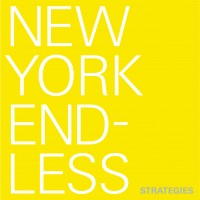 “Scale Those Heights,” off the debut EP from New York Endless, is bedecked with the following ornamentation: a metronomic, tick-tocking rhythm; percolating, cascading synths; a spare, haunting melody and, when a four-chord keyboard pattern kicks in around the three-minute mark, a quietly triumphant ambiance. In short, it’s a gorgeous tune that’s not far removed from the work of Kraftwerk, especially the often-meditative, flowing music the German quartet produced for mid-period albums such as ’77’s Trans-Europe Express and ’78’s The Man-Machine—and for Dan Selzer, the man behind New York Endless, that likely would be the ultimate tribute. Selzer, a veteran DJ and longtime underground presence (he runs the postpunk/new-wave–oriented label Acute Records, among many other claims to fame), doesn’t keep his love of Kraftwerk, and specifically, the combo’s “Europe Endless,” a secret, and the shimmering aesthetic of that song and that album runs strong on this EP.
“Scale Those Heights,” off the debut EP from New York Endless, is bedecked with the following ornamentation: a metronomic, tick-tocking rhythm; percolating, cascading synths; a spare, haunting melody and, when a four-chord keyboard pattern kicks in around the three-minute mark, a quietly triumphant ambiance. In short, it’s a gorgeous tune that’s not far removed from the work of Kraftwerk, especially the often-meditative, flowing music the German quartet produced for mid-period albums such as ’77’s Trans-Europe Express and ’78’s The Man-Machine—and for Dan Selzer, the man behind New York Endless, that likely would be the ultimate tribute. Selzer, a veteran DJ and longtime underground presence (he runs the postpunk/new-wave–oriented label Acute Records, among many other claims to fame), doesn’t keep his love of Kraftwerk, and specifically, the combo’s “Europe Endless,” a secret, and the shimmering aesthetic of that song and that album runs strong on this EP.Which is not to say that Selzer has made a slavish, gently cosmic Kraftwerk copy here. “Scale Those Heights” is a full-bodied and muscular work, closer to the more thoughtful end of the modern-day electronic-house spectrum than nostalgic electropop. The EP’s “A Consultant’s Agreement” presents a variation on the theme: Leading off with an unspooling, circular kalimba-esqe riff, a muted synth melody slowly appears, bubbling keys make an appearance, some skillful hi-hat programming adds more rhythmic accents, and a kick and handclaps hold the piece together until the whole thing fades away—then a surprise coda reminds you of what a gem the song is. It’s a stunner—but the highlight of the release is the 16-minute “Benefits Arrive (Life Goes On),” a cut that conjures up a drive along a rain-slicked, neon-lit city street as adroitly as Kraftwerk ever managed in its prime, thanks to Selzer’s focus on arrangement, sound design, dynamics and an ear for an elegant, near-regal melody. Like the rest of the EP, it’s a grand, hypnotically placid and sweet-hearted all at once. Simply put, it’s a beautiful finish to a striking release.
******************************************************************************************************8
Stone Float
Everlasting Remixes
(MothLab Recordings) This collection of remixes from the Brooklyn freeform-electronics combo Stone Float, the latest release from the Italian digital label MothLab, is a tech-house–leaning treat. That might not be surprising in itself…unless, that is, you’ve heard the original tunes. Not that the originals aren’t good—they’re very good, actually—but there’s not really that much that’s tech-housey, or clubby at all, about them. “Stone Float is one of infinite possible windows that could be open to the inner corners of human consciousness,” the band’s Facebook page states; true, perhaps, but if we had to, we’d narrow the band’s sound down to somewhere between psychedelic trip-hop and progressive industrial. Whatever, the case, these remixes could rock most any tech-friendly dance floor.
This collection of remixes from the Brooklyn freeform-electronics combo Stone Float, the latest release from the Italian digital label MothLab, is a tech-house–leaning treat. That might not be surprising in itself…unless, that is, you’ve heard the original tunes. Not that the originals aren’t good—they’re very good, actually—but there’s not really that much that’s tech-housey, or clubby at all, about them. “Stone Float is one of infinite possible windows that could be open to the inner corners of human consciousness,” the band’s Facebook page states; true, perhaps, but if we had to, we’d narrow the band’s sound down to somewhere between psychedelic trip-hop and progressive industrial. Whatever, the case, these remixes could rock most any tech-friendly dance floor.The three cuts on this EP aren’t the first Stone Float rerubs to see the light of day; that honor goes to a version of “Repeat,” released earlier this year on Plant Music and a remixed by Justin Strauss and Teddy Stuart under their a/jus/ted banner. That track is well worth tracking down—the duo molded the doomy electro-folk of the original into a slightly less doomy slo-mo acid-disco chugger. But the three cuts on the current release are all on the tough and steely side. Luis Padron takes “Rusted Sun,” a slightly sinister drum ’n’ bass number in its original incarnation, and transforms it into a pulsating monster, with throbbing bass and echoing, percussive keys imbuing the track with something approaching old-school tech-trance (that’s a good thing in our book). Illich Mujica, who works with Padron in the MOTH duo, takes a deeper approach to his take on “The Key”—he keeps the windswept melody intact, but buffs the downtempo original into a cluband groover with pinging synths, bellowing bass, loping house rhythm and overall dubby ethos. Finally, there’s “The Letter”: Originally a dreamy head-in-the-clouds kind of cut, Matt Le Khac reconstructs it into a slab of haunted drama, its tough arpeggiated synth supplying the propulsive force while orchestral swoons and an array of effects, fades and whatnot take care of the grandeur. It’s a fascinating track, one that helps take this EP well out of the realm of the ordinary.
- 10 years ago
-
Art for Progress (AFP) is pleased to announce a group exhibition of new works by artists from New York City, Los Angeles, Spain and Israel. The show entitled “Déjà vu” will run from October 30th to November 12th, 2014 at NOoSPHERE Arts in New York City, and the opening reception will take place on October 30th from 6 to 10 PM.
The exhibition will include a variety of mediums, from painting to sculpture, which tackle the theme of déjà vu. The term can be described as “a feeling of having already experienced the present situation” or “a tedious familiarity.”It first appeared in a 1928 text entitled a Text for Psychology. Since then, the topic of déjà vu has been addressed from the big screen to Sci-Fi novels. It is a concept and sensation that has captivated audiences for generations and in this exhibit AFP hopes to push the boundaries of this.
For this show, the concept of déjà vu has been explored from several vantage points, from ideas of storytelling to an affective feeling. This exhibition is seeking to both comment on this topic and try to rethink the way in which it has been socioculturally situated. Déjà vu has come to occupy a very specific place within popular culture and this exhibition aims to build on that while also carving out new meaning for it.
Fourteen artists will be featured in the show: Rocco Alberico, Ted Barr, Bill Claps, Lance Dehne, Tony DiBella, Essam, gilf!, Diane LaRaja, Lichiban, Sona Mirzaei, Carol Nussbaum, Juan Manuel Pajares, Jeanne Wilkinson and Margaret Withers. Local activist artists Essam and gilf! are creating installation pieces in response to the theme. In the gallery’s outdoor space Essam will install one Res Judicata for viewers to get a sense of the scale of these objects and to also feel their presence. Drawing on Dr. Cornell West’s call surrounding National Mass Incarceration Awareness Month, Brooklyn based artist gilf! will wear an inmate jumpsuit for the entire month of October in an effort to examine our prison system. By engaging with the public and creating dialogue about these hidden atrocities she hopes to spur more awareness around this topic. The artist will use the jumpsuits as canvases- centering on self-isolation and the public’s reactions to visually reflect the emotional and mental states she experiences throughout the month. Several of the jumpsuits will be part of the “Déjà vu” exhibition.
The feeling of déjà vu is something all of the artists have personally experienced and this is reflected in their work. Artist Margaret Withers explains how the theme is reflected in her work. “Our capacity to make sense of something is rooted in storytelling…we come to see life as layered stories that fold together to make up our identity.” Whereas Bill Claps investigates the theme in a slightly different way in a recent series of work he completed called “It’s All Derivative.” Claps writes “These images are all glimpses from the past, re-interpreted in a perpetual art historical chain of visual déjà vu.” Clap’s interpretation of déjà vu touches on issues of memory and perception and the way in which this relates to art.
Other artists such as Lichiban and Ted Barr took a more personal approach to the theme. Lichiban explains, “These pieces relate to the theme very intimately. They are characters of a story which reference memory, creative imagination, past lives and spiritual seeking.” And artist Ted Barr described déjà vu as “not a moment of revelation but it is a moment of recognition that the journey of life is not a straight line.”Art For Progress is a 501(c) 3 nonprofit arts organization committed to the cultivation and support of emerging artists working in diverse genres: the visual arts, fashion, music, film, and new media. Based in New York City, AFP seeks to increase the visibility of talented artists, to raise the awareness of the importance of arts education in public schools, and to support those same arts through its arts education program. Visit www.artforprogress.org for more information.
“Déjà vu” will run through November 12th, 2014. Gallery hours are from 12-6 PM Tuesday through Sunday. The show will also include other events over the two week period including several performances and artist talks. The artwork for the invitation is courtesy of photographer Tony DiBella. For additional information about the show please contact Art for Progress Director Frank Jackson via email at frank@artforprogress.org.
NOoSPHERE is located at 251 East Houston Street, New York, NY 10002
- Sona Mirzaei
- Margaret Withers
- Ted Barr
- Bill Claps
- Lichiban
- gilf!
–Anni Irish


